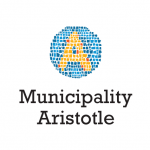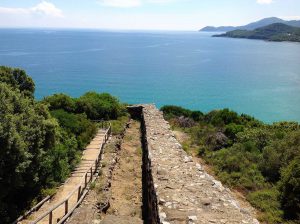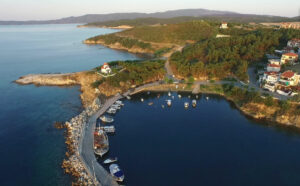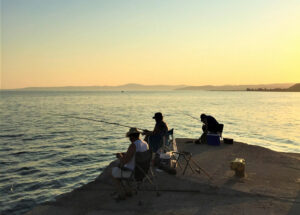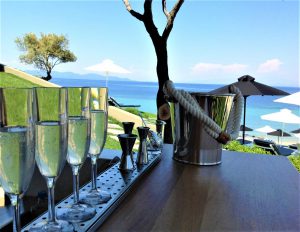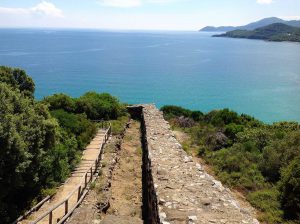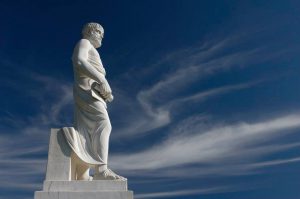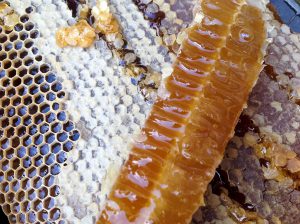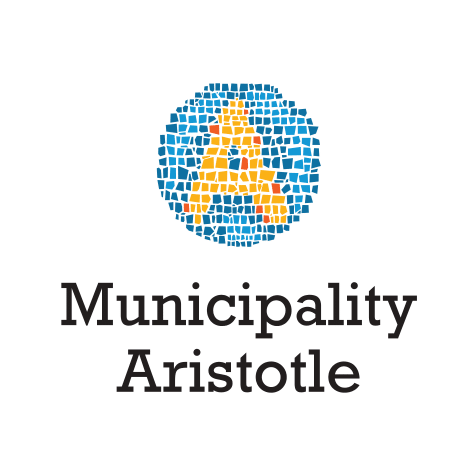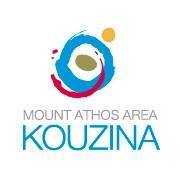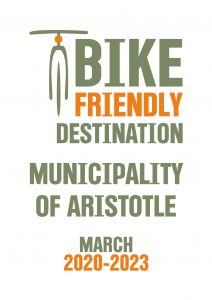A thousand year old history
Mount Athos, commonly known as Holy Mountain, is the most important center of orthodox monasticism since late 10th century and is one of the top monuments of the world’s cultural heritage. It occupies the northern part of Halkidiki’s peninsula, its size is 45 km in length and 5-10 km in width, and is named after the mountain’s homonymous peak (at 2.033m) that overlooks the rocky strip of land. The Athos peninsula is forested, has pastures and small areas that monks do their “handiwork”, i.e. cultivate, for centuries. However, the name “Garden of Virgin Mary” is given by popular faith, because it is the only place privileged to have its own heritage and dominion.
Even though tradition says that the first hermits settled there at the end of the 8th century, the first ones mentioned is a person shrouded by mists of myth named Peter the Athonite and Saint Euthymius the Younger, both settling there in 859. Initially, cenobitic monasticism appeared in 963, when Athanasios the Athonite, supported by his friend and emperor Nikephoros Phokas, founded the oldest monastery of Megisti (Great) Lavra. In 972, John Tsimiskes signed the famous “Tragos” (a text on parchment), which constitutes the Athonite monasticism’s first “typicon”, bearing the rules of organizing and operation of the cenobitic communities. Avaton, is one of the most ancient and unbreakable rules. In 1060, emperor Constantine Monomachos introduced the so called avaton, the non-accessibility of Mount Athos to eunuchs, beardless children and women. It attracted the interest, grace protection and tax immunity of the Byzantine emperors and the other Balkans orthodox rulers right from the very first years of its history. At the same time, the Ecumenical Patriarchate of Constantinople claimed and still has the spiritual jurisdiction of the monasteries.
CENOBITIC ORGANIZATION
During the 10th century, Mount Athos attracted monks from several orthodox countries. The Georgian monastery of Iviron was founded in 979-80 and the Italian monastery of Amalfi, not existing at present day, was established next. Several orthodox Armenians were among those in the fraternity of Esphigmenou monastery. The Slavs monks arrived in the 12th century. The Panteleimon monastery was passed on to monks from the state of Ros, ie, the areas around Kiev. The Chilandariou monastery was renovated to a Serbian monastery and Bulgarian monks settled in Zografou monastery in the 13th century.
Mount Athos retains a timeless inter-orthodox character. The cenobitic organization of monastic fraternities quickly gained ground against individual hermit ascetics. The administration and spiritual guidance was exercised by the abbot, the obediences where an obligation of each monk and the feeding was common.
The monasteries of Megisti Lavra, Vatopediou and Iviron occupied the first three positions in the hierarchical classification of the monasteries and where prioritized in the central command of the Mount, the “Protato” of Karyes. New monasteries were established during the 11th-12th century such as the Konstamonitou, the Dochiariou, the Koutloumousiou, and at the same time other monasteries expanded their properties.
ARCHITECTURE
During the ages, monasteries were large multistorey, confined building blocks, with wings housing the “kellia”, the lodgings of the monks as well as facilities for their self-operation. The refectory where the common dinning of monks and pilgrims take place, the container where food and olive oil are stored, as well as the vagenareio (wine cellar) are some of the many buildings of the monasteries. The focal point of monastic life is the Catholicon, a church in the centre court. The fountain used for the blessing of the water is located in the yard. The monastery has a small shipyard, a building complex at the beach including a harbor and storage spaces.
Constant threats from several invaders during history, forced the monasteries to create an impressive fortress architecture with huge defensive towers dominating the area.
In 1204, the conquest of Constantinople by the Franks of the fourth Crusade and the allegiance of Mount Athos to the Latin Kingdom of Thessaloniki created a lot of problems. In addition, bandit attacks by the notorious Catalan Company in the 14th century, worsened the relations between monks and Latins. Pirate attacks of Turkish emirs of Asia Minor have taken place at the same period according to the monasteries’ historical records.
A period of prosperity followed, with the founding of the monasteries of Gregoriou, Dionisiou, Pantokratoros and Simonopetras. At that time, Athos became the center of Hesychasm, with Gregorios Palamas as its representative, who expressed the mystical dimension of the Orthodox tradition.
THE PROPERTIES OF THE MONASTERIES
Estates, vineyards, pastures, mills, fish farms, whole villages, urban rented properties and workshops are some of the properties owned by monasteries of Athos. They were located in Macedonia including Thessaloniki and especially in Halkidiki peninsular and Strimonas valley. They extented to Thrace, Lemnos, Serbia and Wallachia. Many monasteries owned ships for transporting products and importing necessary supplies. Their ownership rights and tax exemptions were ensured by imperial Golden Bulls . Their benefactors, apart from the humble peasants, were byzantine emperors, Grand Komnenos of Trabzond, rulers of Serbia and Bulgaria and voivodes of Wallachia.
The peculiar monasticism with the administration of the monasteries being exercised by the Assembly of Heads, developed in the 14th century. Worship was common but the ministrations were paid. Each monk assumed the responsibility of taking care of himself. At present, every monastery follows the cenobitic way of life.
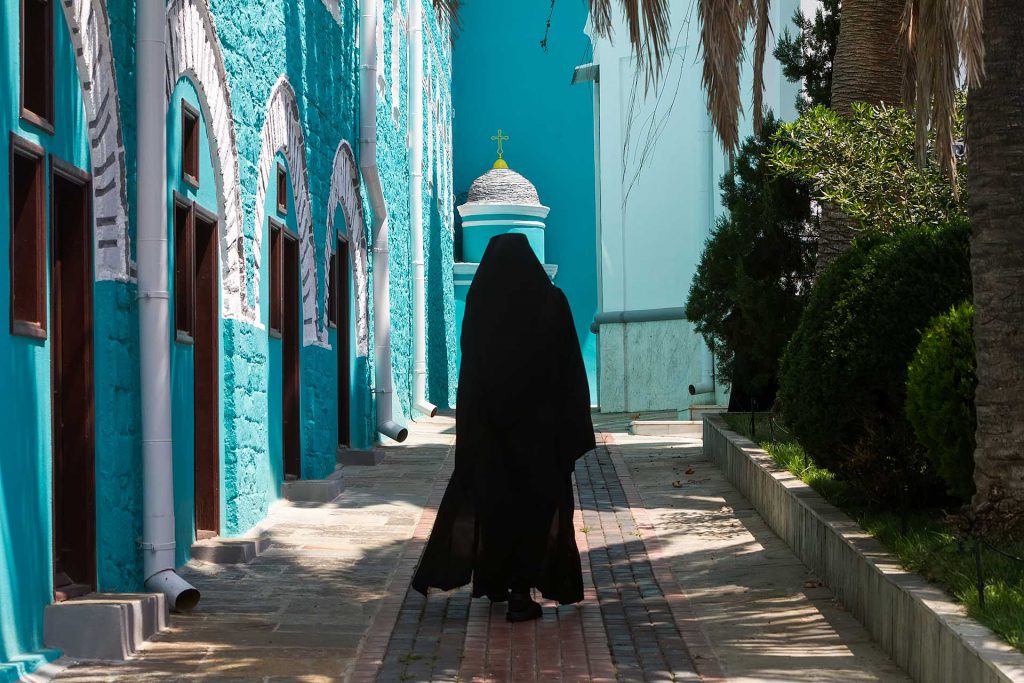
Mount Athos
Halkidiki, Greece
SKETES, CELLS, SEATS
In 1430 when Ottomans ruled Mount Athos, its autonomy was recognized and its monasteries had to pay taxes. A few peculiar forms of monastic exercise had been sread during the Ottoman rule, such as Sketes, Cells, Seats and Hesyhasms. They belong to a monastery as its “accessory parts”. Hermitages are settlements consisting of “huts” built around a church named “Kyriako”. Every “hut” is inhabited by three monks who elect the head of the Skete called “dikaio”. The oldest Sketes in Mount Athos are those of St. Anna and Kafsokalyvia. The “Cells” consist of a small temple and a house with its yard. These are granted for life to an old monk who exercises there together with his ”escort”, his two “subjects”.
The “Cells”, but mainly the “Hermitages” are individual huts at the steep coasts of southwestern Athos, where the hermit strictly exercises by continuous prayers, vigil and deprivation. Ottoman rule highlighted some great personalities in the Mount, such as the one of Cretan Agapios Landos of Kollyvades in the 18th century. At the same time, Vatopedi monastery introduced in 1848, a core of modern Greek Enlightenment called “Athoniada”, with famous students as Iosipos Moisiodax and Cosmas of Aetolia.
Emmanuel Papas disembarked in Daphne in 1821 and declared the Revolution of the Greek nation. A new period started with the liberation of Macedonia, when the international treaties recognized the self-rule of the Monastic State of Mount Athos within the limits of the Greek state. At present, European Union Treaties ensure the inviolability of this ancient status, which always prevailed in the Athonite peninsula.
THE RECOVERY
Nowadays, Athos’ monasticism shows an optimistic recovery, overcoming a period of decline, when the huge monastic complexes suffered from the lack of men. In the last thirty years the number of new monks more than doubled and the monasteries have been renovated. Monasticism gained some special quality characteristics and the cenobitic way of life was strengthened. Elder Fathers with high spiritual and moral stature led many young, highly educated people to the monastic tonsure. Despite the challenges of the 21st century, the 20 “Dominant”, “Royal”, Patriarchal” and “Stavropegial” holy monasteries comprising the Monastic State of Mount Athos, continue to support and spiritually reinforce the Church and the Greek society with the ascetic lifestyle. At the same time they fight vigorously to preserve intact the divine-human landscape.
Text: Dr. Antonios G. Dikaios/ Theologian – Environmentalist
